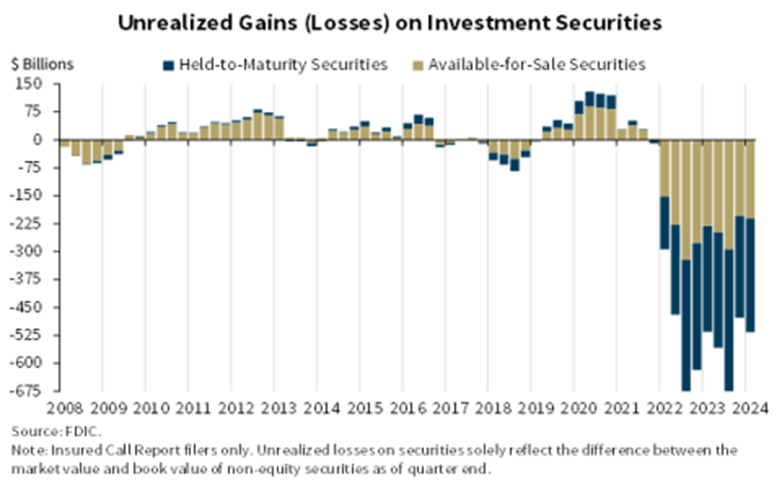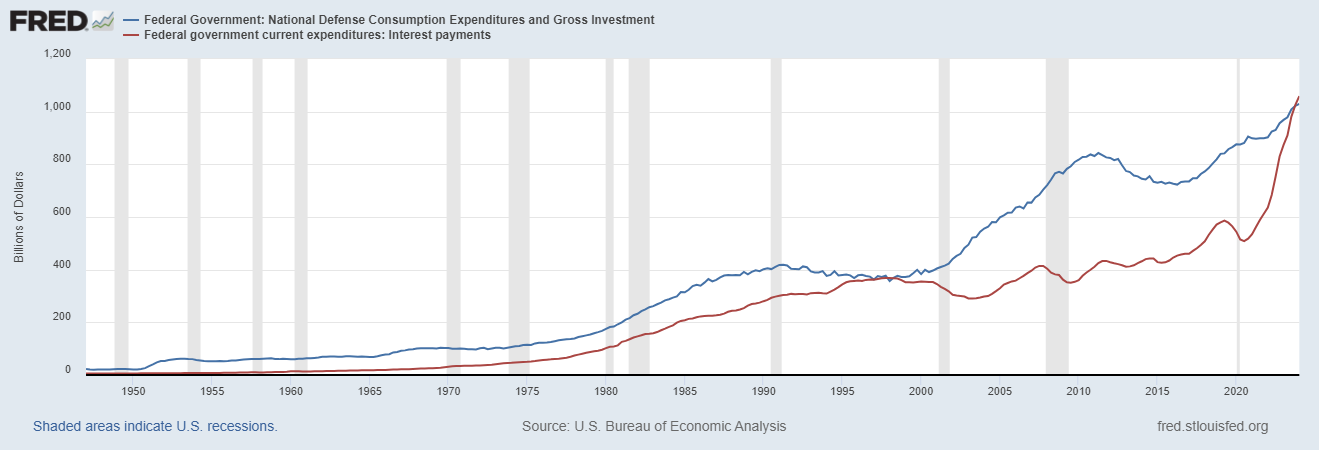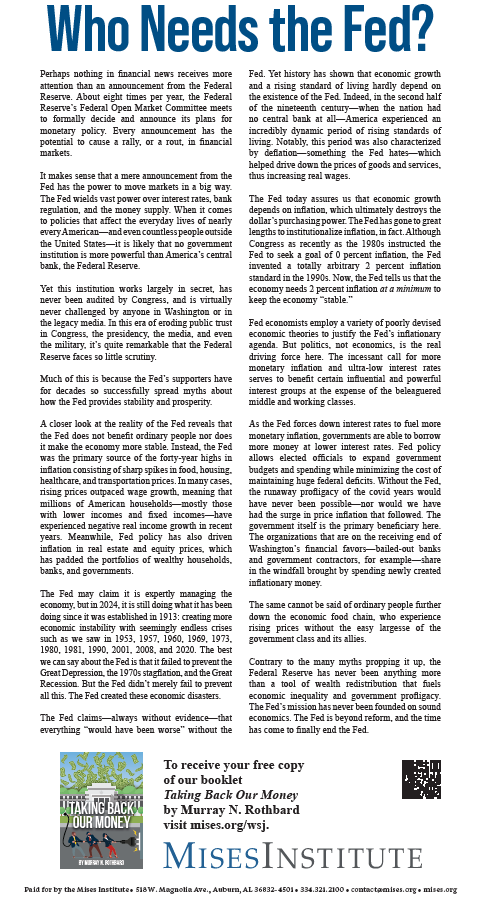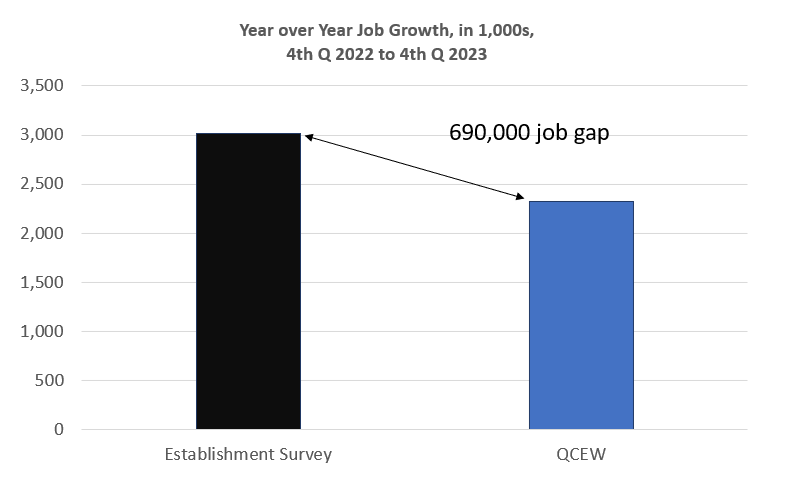Originally published by Law&Liberty.
The Consumer Financial Protection Bureau (CFPB) has been a source of controversy since its creation. Critics of the agency have long argued that its independent status is unconstitutional. In a recent decision, however, the Supreme Court affirmed the constitutionality of the CFPB’s funding scheme, even though it circumvents the normal Congressional appropriation process by “allowing the Bureau to draw money from the earnings of the Federal Reserve System.”
This decision belies the Fed’s current financial condition and conflicts with provisions in the Federal Reserve Act. The fact of the matter is that the Fed no longer has any earnings. It currently has huge cash operating losses and must borrow to fund both the Fed’s and the CFPB’s operations. When it is not literally printing dollars to pay these bills, the Fed is borrowing on behalf of the system’s 12 privately owned Federal Reserve district banks—not the federal government. These borrowings are not federally guaranteed. More problematic still is that nine of the 12 Federal Reserve district banks (FRBs) are technically insolvent, as is the Fed System as a whole.
The CFPB’s unique funding structure comes from provisions in the 2010 Dodd-Frank Act. Essentially, it requires that the Fed transfers funds to the CFPB without oversight from the congressional Appropriations Committees. In its 7-2 decision, the Supreme Court upheld these provisions and found that the funding apparatus “constitutes an ‘Appropriatio[n] made by Law’” because it is “drawn from the Treasury.”
One unfortunate bug in the Court’s opinion is that, since the Federal Reserve is currently making losses, there are no Federal Reserve System earnings for the CFPB to draw upon. The system has lost a staggering sum of $170 billion since September 2022, and continues to accumulate more than $1 billion in operating losses each week. Under standard accounting rules, it has negative capital and is technically insolvent. The Fed stopped sending distributions of its earnings to the US Treasury in September 2022 because there were no earnings to distribute. It should have stopped sending payments to the CFPB at the same time for the same reason.
The second problem with the Court’s decision is that, unless the CFPB draws all its expenses from the Federal Reserve in the form of Federal Reserve Notes, the transferred monies are neither “public money” nor “drawn from the Treasury.” This is the law of the land as codified in the Federal Reserve Act.
When the Federal Reserve posts an operating loss, it must rebalance its accounts. It can do this by (1) selling assets or using the proceeds from maturing assets to cover the loss; (2) reducing its retained earnings, or if there are no retained earnings, reducing its paid in equity capital; or (3) issuing new liabilities. Regardless of how it chooses to rebalance its books, each new dollar of Fed operating loss or dollar spent funding the CFPB causes the Fed’s liabilities to increase relative to its assets, and, under standard accounting rules, the Fed’s liabilities are already greater than its assets.
Because of interest rate increases, the true market value of the Fed’s assets is far less than their book value—a shortfall of about $1 trillion. The Fed has stated that it will hold these assets to maturity to avoid realizing these mark-value losses. Meanwhile, the Fed’s $170 billion in accumulated cash operating losses have already fully exhausted the Fed’s retained earnings and paid in equity capital, so now the Fed must borrow to balance its accounts.
The Fed has three ways it can borrow to pay for the CFPB or new Fed operating losses. It can: (1) issue new Federal Reserve Notes; (2) borrow by increasing deposits at Federal Reserve district banks; or, (3) borrow from financial markets using reverse repurchase agreements. Of these three ways the Fed borrows, only Federal Reserve Notes are explicitly guaranteed by the full faith and credit of the US government and can be considered “public money drawn from the Treasury.”
According to the Federal Reserve system’s 2023 audited financial statements:
Federal Reserve notes are the circulating currency of the United States. These notes, which are identified as issued to a specific Reserve Bank, must be fully collateralized. …The Board of Governors may, at any time, call upon a Reserve Bank for additional security to adequately collateralize outstanding Federal Reserve notes. … In the event that this collateral is insufficient, the FRA provides that Federal Reserve notes become a first and paramount lien on all the assets of the Reserve Banks. Finally, Federal Reserve notes are obligations of the United States government.
The Federal Reserve Act does not grant the Fed unlimited authority to print new paper currency to cover its losses or fund CFPB operations. As of May 22, the Fed’s H.4.1 report shows that it owned less than $7.3 trillion in assets but had more than $7.4 trillion in liabilities issued to external creditors, including $2.3 trillion in Federal Reserve Notes. After collateralizing its outstanding currency, the system has $5 trillion in remaining assets, but more than $5.1 trillion in outstanding liabilities other than Federal Reserve Notes. The system as a whole has more than $127 billion in external liabilities that cannot be legally turned into Federal Reserve Notes.
To the extent that the CFPB is not being fully funded with newly issued Federal Reserve Notes, the CFPB is not being funded by “public money drawn from the Treasury.”
Under the Federal Reserve Act, about $5 trillion of Federal Reserve System’s current external liabilities are not backed by the federal government but only by the creditworthiness of the 12 FRBs. But nine, including all of the largest FRBs, have negative capital when measured using generally accepted accounting standards. With about $1 trillion in unrecognized market value losses on their securities, the true financial condition of the 12 FRBs is far weaker than their accounting capital suggests. And to make matters worse, only three of the 12 FRBs have enough collateral to redeem all of their external liabilities by printing new paper currency, which is the only federally guaranteed liability FRBs issue.
In addition, the largest funding source for the Fed, deposits in FRBs, are not explicitly collateralized or guaranteed by the federal government. FRB deposits are only protected by the value of FRB assets that are not otherwise pledged. Although the Fed’s depositors may believe they have an “implicit Treasury guarantee” in the same way that Freddie Mac and Fannie Mae bondholders believed that their bonds were guaranteed by the US Treasury, the Federal Reserve Act does not include a federal government guarantee for FRB deposits.
Fed deposits are meant to be protected by FRB paid-in capital and surplus, but that has been fully consumed by the operating losses in nine of 12 FRBs; and also protected in law (but not in practice) by a callable capital commitment and a “double liability” call on member bank resources that is an explicit FRB shareholder responsibility under the Federal Reserve Act. In other words, member banks as FRB shareholders, are legally responsible for some part of any loss incurred by the FRB’s unsecured liability holders, most importantly FRB depositors.
But notwithstanding large operating losses that have completely consumed the capital of most FRBs, the Federal Reserve Board has never utilized its powers under the Federal Reserve Act to increase the capital contributions of member banks or invoke member bank loss-sharing obligations. Indeed, all FRBs, even the most technically insolvent FRB, New York, continue to pay member banks dividends on their FRB shares, as well as make payments to the CFPB from nonexistent earnings.
If, in the highly unlikely event that FRB member banks were called upon to inject additional capital into their FRB to cover Fed operating losses and CFPB expenses, these monies would clearly not be public monies drawn from the Treasury. Yet, under the Supreme Court’s ruling, the cash proceeds of the call on FRB member banks would be shipped over to pay the expenses of the CFPB. This fact alone seems to contradict the logic of the Supreme Court’s majority decision.
In sum, the Supreme Court’s recent ruling notwithstanding, the CFPB’s funding mechanism currently conflicts with the clear language of both the Dodd-Frank Act and Federal Reserve Act. As long as the Fed continues to suffer operating losses, the CFPB is not being funded with Federal Reserve earnings, and to the extent that the CFPB is not being fully funded with newly issued Federal Reserve Notes—and it is not—the CFPB is not being funded by “public money drawn from the Treasury.”
Originally published by Law&Liberty.
Full story here Are you the author? Previous post See more for Next postTags: Featured,newsletter































